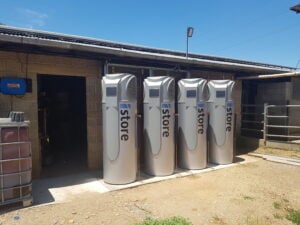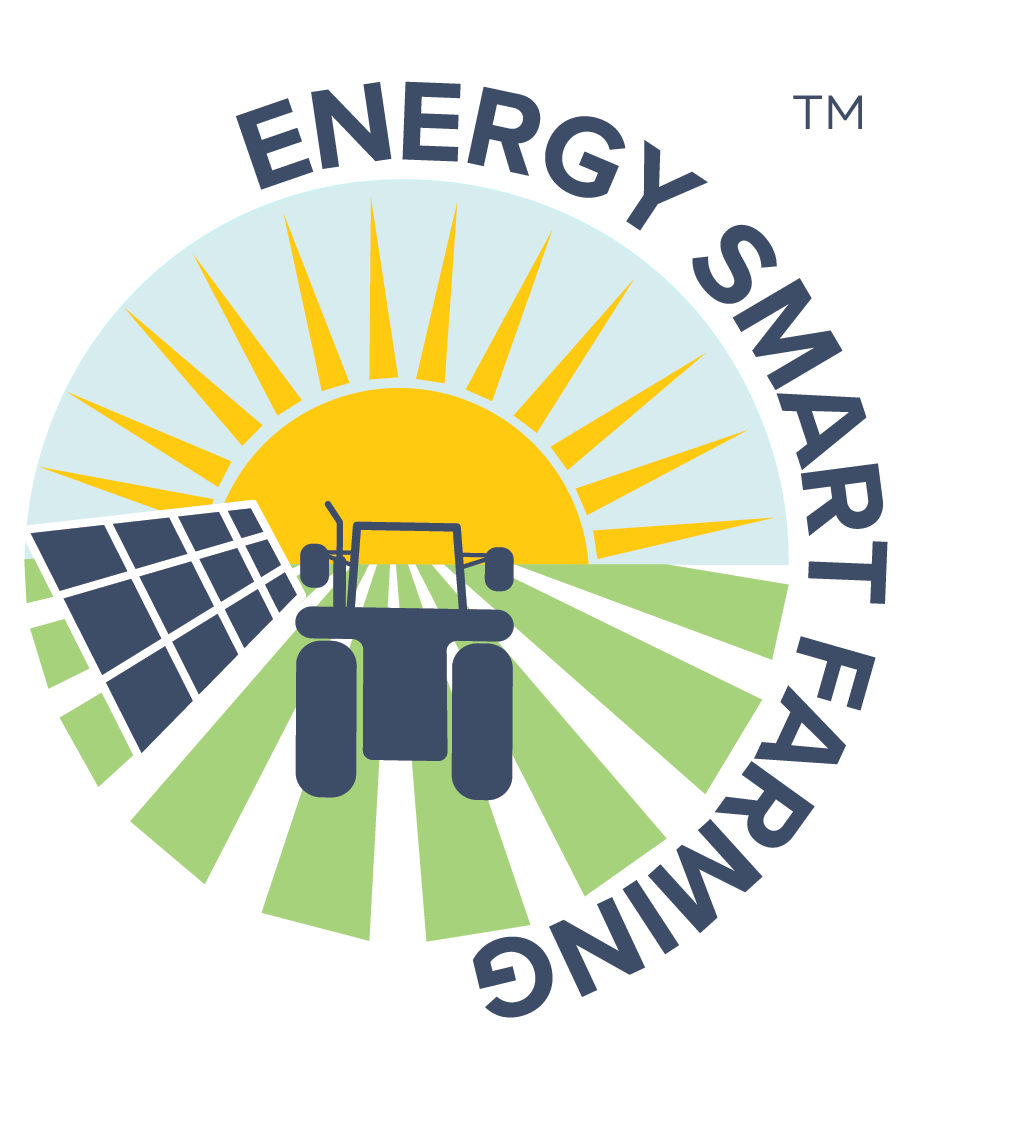Like most dairies, heating water along with cooling milk were the biggest electricity uses at the Johnson’s dairy. For the Johnsons, involvement with the Victorian Government’s Agriculture Energy Investment Plan (AEIP) helped them realise the opportunity to invest in energy efficient technology.
The Johnson family milk around 200 cows on a 202 hectare property at Oxley Flats (near Wangaratta) in north east Victoria, with an annual milk production around 1.3 million litres. The dairy shed has a 3,700 litre milk vat and two hot water services (one for the main wash and one for the vat wash). There are three electric powered irrigation pumps. Power supply to the property is three phase. The Johnsons undertook an AEIP energy assessment in 2018 and subsequently received AEIP assistance for the installation of solar Photovoltaic (PV) panels and heat pumps.
The opportunity
The cost of power used at dairy, especially for water heating was one of the Johnson’s key concerns. Greg said that “plant and equipment hygiene is critical in a dairy operation and heating water is one of the biggest costs, along with cooling milk”. To reduce electricity consumption, the Johnsons had already installed a glycol milk vat and energy efficient milk and vacuum pumps in the dairy. Before the AEIP energy assessments were offered, Greg hadn’t thought about getting an energy audit. The Johnsons found that the audit to be of great benefit, not only in helping them choose ‘big ticket’ items, but also for doing the ‘small’ things that deliver energy savings, like insulating pipes. The dairy has an older electric hot water service which is relatively inefficient. Greg says that “the assessment highlighted the gains for installing a heat pump, which together with installing solar PV, will allow us to reduce costs for the dairy”.
The technology
Solar Photovoltaic (PV) panels with a capacity of 13.2kW were installed by the Johnsons and the PV system is used to generate electricity for use at the dairy shed and to supply power to an irrigation pump. The Johnsons also installed (air source) heat pumps that preheat water to around 60 degrees – prior to the electric hot water service heating it to a higher temperature of 90 degrees. Heat pumps are an energy efficient way to heat water as they use latent heat captured from the surrounding air, together with a compressor, to heat water. The Johnson’s chose to install a system with four heat pumps (4 @ 270 litres). This has the advantage that if any individual heat pump should fail on a day – the provision of hot water is not compromised – as three pumps can still effectively preheat the water before it enters the electric hot water service.

Photo: Heat pumps at the Johnson Dairy
The outcomes
The Johnsons are very happy with the outcomes delivered by installing the solar and heat pumps. They are achieving their milk production and quality targets but using less power. Greg has said that “the solar PV system is operating well and has met our expectations. Over the year, we are consuming more solar generation on-farm than is being exported to the grid. In the winter months, we are using nearly all of our PV generation. Only in the summer months are we exporting more to the grid than we are consuming for on-farm activities”. “The heat pumps have reduced our hot water energy use in the dairy by around 50 per cent and they offer greater reliability. Before when the electric hot water service broke down, we had to rely on a service agent coming out and being able to fix it the same day. The heat pumps have a screen where we can see if there are any issues. And if one of the four heat pumps should malfunction, the other three will still deliver sufficient preheated water to the hot water service for the day”.
Table 1: Investment costs and benefits of new energy saving technologies
| Technology | Investment Costs | Benefits | Modelled annual benefits | Payback (discounted) |
|---|---|---|---|---|
| Solar PV | $11,000 | Electricity | $3,400 | 3.6 years |
| Heat Pumps | $10,000 | Electricity & other | $2,200 | 5.2 years |
future ‘savings’. ‘Other’ benefits are net savings on servicing and maintenance. The value shown for ‘modelled annual benefits’ is the average of annual savings across the payback period. Investment costs are ex-GST; and for eligible technology, also after deducting the value of small-scale technology certificates (STC). A 6 per cent discount rate was used in calculating the payback years.
The last word
Greg said the technology has delivered on cost savings and more. “Being able to generate hot water at a lower cost, has not only saved us money, but also helped ensure reliable daily delivery of a quality milk product. Installing the heat pumps and using solar electricity across the dairy has been a great choice for us.” “We have now reduced our annual consumption of grid electricity at the dairy shed by around a quarter, which is also a great step towards our goal of minimising emissions. We are also considering the opportunity for us to switch some of our summer irrigation times from night time to day time, so we can strategically use more of the higher solar generation in summer months.”
Download a copy of this case study – Solar and heat pumps deliver.pdf



